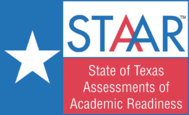
Advanced Placement (AP) is a program in the United States and Canada created by the College Board. AP offers undergraduate university-level curricula and examinations to high school students. Colleges and universities in the US and elsewhere may grant placement and course credit to students who obtain qualifying scores on the examinations.

Educational Testing Service (ETS), founded in 1947, is the world's largest private educational testing and assessment organization. It is headquartered in Lawrence Township, New Jersey, but has a Princeton address.

The No Child Left Behind Act of 2001 (NCLB) was a U.S. Act of Congress promoted by the Presidency of George W. Bush. It reauthorized the Elementary and Secondary Education Act and included Title I provisions applying to disadvantaged students. It mandated standards-based education reform based on the premise that setting high standards and establishing measurable goals could improve individual outcomes in education. To receive federal school funding, states had to create and give assessments to all students at select grade levels.

The Florida Comprehensive Assessment Test, or the FCAT/FCAT 2.0, was the standardized test used in the primary and secondary public schools of Florida. First administered statewide in 1998, it replaced the State Student Assessment Test (SSAT) and the High School Competency Test (HSCT). As of the 2014-2015 school year FCAT was replaced in the state of Florida. The Florida Department of Education later implemented the Florida Standards Assessments (FSA) for English Language Arts, Reading, Mathematics and a Writing or typing test. A Comprehensive science test is still used for grades 5 and 8.
Lincoln-Way Community High School District 210 is a school district in the southwest suburbs of Chicago. Created in 1951, the district serves the communities of New Lenox, Frankfort, Mokena, Manhattan, and small portions of Tinley Park, Orland Park and Homer Glen. The three schools comprising the district are Lincoln-Way Central High School, Lincoln-Way East High School, and Lincoln-Way West High School. A fourth high school, Lincoln-Way North High School, was closed at the end of the 2015–2016 school year as part of a deficit reduction plan. Lincoln-Way Central and Lincoln-Way West are located in New Lenox, Lincoln-Way East is located in Frankfort and Lincoln-Way North is in Frankfort Square. District 210 offices are located at Lincoln-Way Central.
The Washington Assessment of Student Learning (WASL) was a standardized educational assessment system given as the primary assessment in the state of Washington from spring 1997 to summer 2009. The WASL was also used as a high school graduation examination beginning in the spring of 2006 and ending in 2009. It has been replaced by the High School Proficiency Exam (HSPE), the Measurements of Students Progress (MSP) for grades 3–8, and later the Smarter Balanced Assessment (SBAC). The WASL assessment consisted of examinations over four subjects with four different types of questions. It was given to students from third through eighth grades and tenth grade. Third and sixth graders were tested in reading and math; fourth and seventh graders in math, reading and writing. Fifth and eighth graders were tested in reading, math and science. The high school assessment, given during a student's tenth grade year, contained all four subjects.
The California Assessment of Student Performance and Progress (CAASPP), known until February 2014 as the Measurement of Academic Performance and Progress (MAPP), measures the performance of students undergoing primary and secondary education in California. In October 2013, it replaced the Standardized Testing and Reporting (STAR) Program.
The California High School Exit Examination (CAHSEE) was an examination created by the California Department of Education, that was previously mandated to administer in high schools statewide in order to graduate. The examination was suspended in 2015, when Governor Jerry Brown signed a bill undoing the decade old requirement. It was originally created by the California Department of Education to improve the academic performance of California high school students, and especially of high school graduates, in the areas of reading, writing, and mathematics. In addition to other graduation requirements, public school students needed to pass the exam before they could receive a high school diploma.

Thornton Fractional Township South High School is a high school located in Suburban Cook County, Illinois, located 6 miles (9.7 km) from the city limits of Chicago. The school serves an area of approximately 9 square miles (23 km2), & serves over 2,000 students in grades 9-12 who reside in the near South Suburban communities of Lansing and Lynwood.
A norm-referenced test (NRT) is a type of test, assessment, or evaluation which yields an estimate of the position of the tested individual in a predefined population, with respect to the trait being measured. Assigning scores on such tests may be described as relative grading, marking on a curve (BrE) or grading on a curve. It is a method of assigning grades to the students in a class in such a way as to obtain or approach a pre-specified distribution of these grades having a specific mean and derivation properties, such as a normal distribution. The term "curve" refers to the bell curve, the graphical representation of the probability density of the normal distribution, but this method can be used to achieve any desired distribution of the grades – for example, a uniform distribution. The estimate is derived from the analysis of test scores and possibly other relevant data from a sample drawn from the population. That is, this type of test identifies whether the test taker performed better or worse than other test takers, not whether the test taker knows either more or less material than is necessary for a given purpose. The term normative assessment is used when the reference population are the peers of the test taker.
The General Achievement Test is a test of general knowledge and skills including communication, mathematics, science and technology, the arts, humanities and social sciences in the Australian state of Victoria.

Centennial High School is a public high school serving grades 9-12 in Champaign, Illinois. It is part of Champaign Unit 4 School District. As of the 2020–21 school year, it had 1,400 students. The school is located next to Jefferson Middle School and Centennial Park.
Education in Jamaica is primarily modeled on the British education system.

A high-stakes test is a test with important consequences for the test taker. Passing has important benefits, such as a high school diploma, a scholarship, or a license to practice a profession. Failing has important disadvantages, such as being forced to take remedial classes until the test can be passed, not being allowed to drive a car, or difficulty finding employment.
The Bloom Township High School District 206 is a public high school district that serves Bloom Township, Illinois, United States. The district consists of 3,558 students in grades 9-12 in two high schools and one alternative high school.

Rochester High School of Rochester, Illinois is a public high school located five miles (8 km) east of Springfield. As the only high school serving District 3A, Rochester High School accommodates students from Rochester, Buckhart, portions of eastern Springfield, and other surrounding areas. Rochester has grown rapidly over the past few years. In 2008, the enrollment was 699 students, which was up from 589 in 2004.
Elmwood High School, or EHS, is a public four-year high school located at 301 West Butternut Street in Elmwood, Illinois, a small city in Peoria County, Illinois, in the Midwestern United States. EHS is part of Elmwood Community Unit School District 322, which serves the communities of Elmwood, Oak Hill, and Edwards, and also includes Elmwood Junior High School, and Elmwood Elementary School. The campus is located 20 miles northwest of Peoria, and serves a mixed small city, village, and rural residential community. The school lies within the Peoria metropolitan statistical area.

The State of Texas Assessments of Academic Readiness, commonly referred to as its acronym STAAR, is a series of standardized tests used in Texas public primary and secondary schools to assess a student's achievements and knowledge learned in the grade level. It tests curriculum taught from the Texas Essential Knowledge and Skills, which in turn is taught by public schools. The test used to be developed by Pearson Education every school year, although the most recent contract gave Educational Testing Service a role in creating some of the tests, under the close supervision of the Texas Education Agency.
A high school diploma is a diploma awarded upon graduation of high school. A high school diploma is awarded after completion of courses of studies lasting four years, typically from grade 9 to grade 12. It is the school leaving qualification in the United States and Canada.









